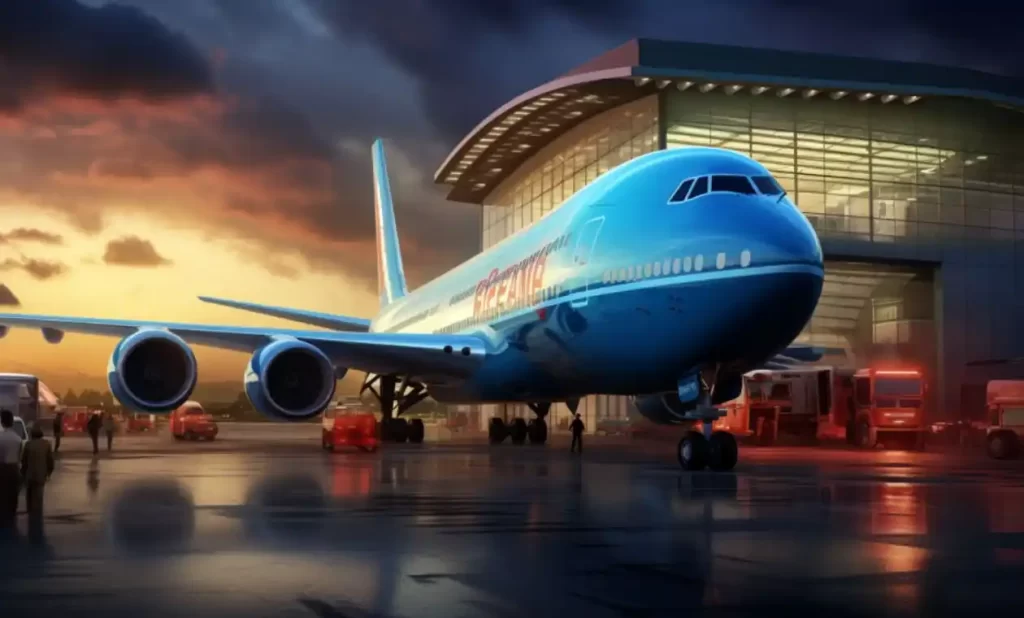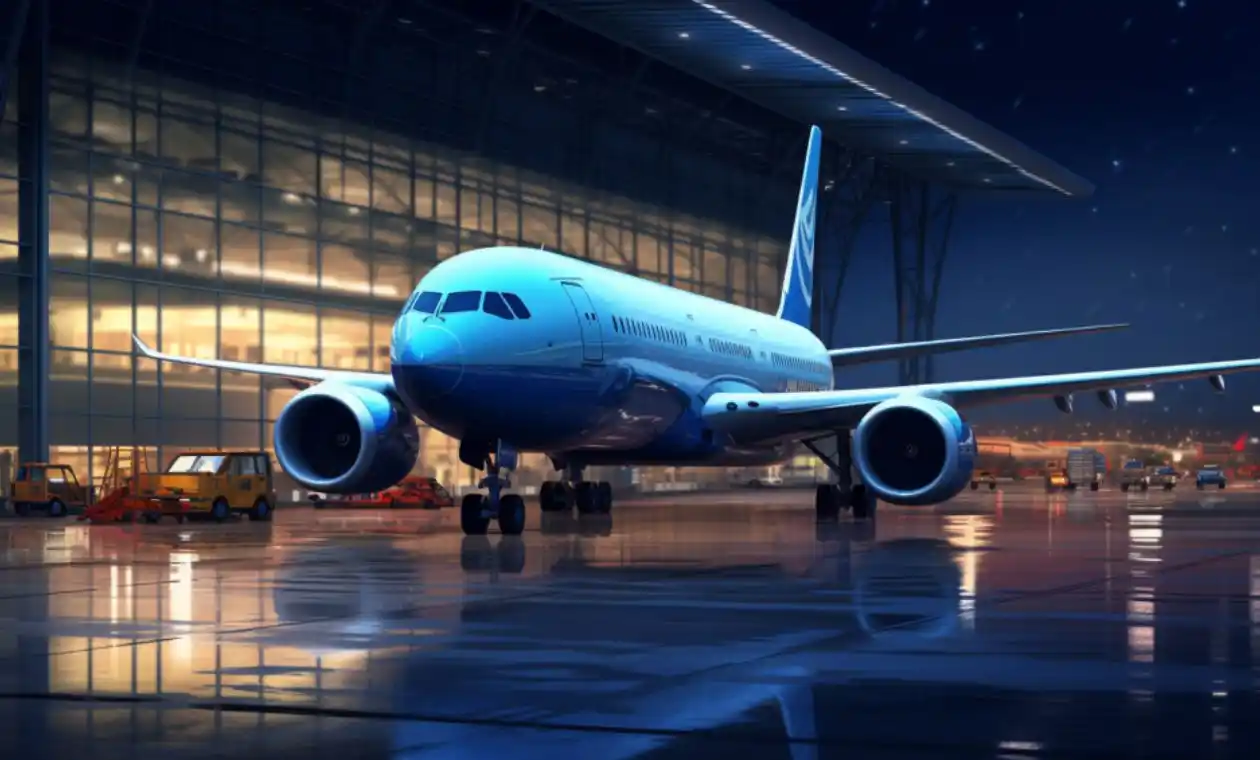
The Boeing Company, a titan in the aerospace industry, has etched its name into the annals of aviation history with a legacy that spans over a century. From its humble beginnings in 1916, Boeing has evolved into a global powerhouse, fundamentally shaping the way we traverse the skies. Renowned for its innovative spirit, Boeing stands as a testament to human ingenuity and the relentless pursuit of flight.
Boeing’s significance in the aerospace realm is unparalleled. As a key player in commercial aviation, the company has revolutionized air travel, introducing iconic aircraft that have become synonymous with efficiency, safety, and progress. From the groundbreaking Boeing 707 to the cutting-edge 787 Dreamliner, each model represents a chapter in the evolution of air transportation.
The impact of Boeing resonates far beyond the clouds. As a major contributor to defense and space technology, Boeing has been instrumental in advancing military capabilities and exploring the cosmos. The company’s influence extends globally, with its aircraft dominating the skies and its innovations setting the standard for the entire aerospace industry.
As we embark on a journey to unveil the depths of Boeing’s legacy, we delve into the technological marvels, historical milestones, and future promises that define this aviation giant. Join us in this exploration of Boeing, where each chapter unfolds a new dimension of human achievement and a continued commitment to conquering new horizons.
Founding Visionaries: Pioneers in Aviation’s Horizon
Profiles of Boeing’s Founders and Key Personalities:
Boeing’s journey into the skies began with the visionary minds of William Boeing and George Conrad Westervelt. William Boeing, a timber magnate with a passion for aviation, and George Westervelt, a U.S. Navy engineer, shared a dream of transcending earthly bounds. In 1916, they laid the foundation for what would become a global aerospace giant.
William Boeing’s relentless pursuit of aeronautical innovation and George Westervelt’s technical expertise formed a symbiotic partnership. Their collaboration went beyond business; it embodied a shared vision of bringing the marvel of flight to the masses. This dynamic duo laid the groundwork for a company that would shape the course of aviation history.
Early Goals and Vision for the Company
In its infancy, Boeing aimed not just to build airplanes but to redefine the possibilities of human flight. Their early goals were ambitious: to create aircraft that pushed the boundaries of speed, range, and reliability. Boeing envisioned aviation not as a luxury but as an accessible mode of transportation that could connect people and cultures across vast distances.
The company’s vision extended beyond immediate commercial success. Boeing aspired to contribute to the broader field of aeronautics, fostering advancements that would benefit humanity as a whole. This commitment to innovation and societal progress became the cornerstone of Boeing’s identity.
Milestones Leading to Boeing’s Establishment
The pivotal moment in Boeing’s establishment occurred in 1916 when the Boeing Company was officially founded in Seattle, Washington. One of their early milestones was the Boeing Model 1, affectionately known as the “B&W,” which marked Boeing’s entry into aircraft manufacturing. This biplane laid the foundation for subsequent models that would set the standard for commercial aviation.
Boeing’s establishment coincided with a period of rapid technological advancement, and the company quickly became a trailblazer in the aviation industry. The Model 40, a pioneering mail plane, exemplified Boeing’s commitment to pushing the boundaries of what aviation could achieve. These milestones not only solidified Boeing’s presence in the industry but foreshadowed a legacy of innovation that would endure for decades to come.
Evolution of Boeing’s Aircraft: A Skyward Odyssey
Overview of Boeing’s Contributions to Commercial Airplanes
Boeing’s ascent to prominence in the aerospace industry is synonymous with its unparalleled contributions to commercial airplanes. From the early propeller-driven models to the cutting-edge jetliners of today, Boeing has not only been a participant in the evolution of commercial aviation but a pioneering force that has continually reshaped its trajectory.
The Boeing 707, introduced in the late 1950s, heralded the jet age and marked a paradigm shift in air travel. This revolutionary aircraft transformed long-distance travel, making it faster, more comfortable, and accessible to a broader audience. The subsequent introduction of the iconic Boeing 747, the “Queen of the Skies,” further solidified Boeing’s position as an industry trailblazer. This double-decker marvel became a symbol of luxury and efficiency, setting the standard for long-haul flights.
Advancements in Aerospace Technology
Boeing’s commitment to pushing the boundaries of aerospace technology is evident in its continuous quest for innovation. The introduction of the Boeing 777, with its state-of-the-art avionics and composite materials, represented a leap forward in fuel efficiency and passenger comfort. The Dreamliner series, including the Boeing 787, revolutionized the industry with its emphasis on fuel economy, reduced emissions, and enhanced passenger experience.
Beyond the commercial realm, Boeing’s forays into military aircraft showcase technological prowess. The Boeing F/A-18 Hornet and the iconic Boeing B-52 Stratofortress exemplify the company’s versatility, providing cutting-edge solutions for defense and strategic aviation.
Key Models and Their Impact on Global Aviation
Boeing’s impact on global aviation is imprinted in the success stories of its key models. The Boeing 737, introduced in the 1960s, stands as the best-selling commercial jetliner in history, epitomizing reliability and efficiency for short to medium-haul flights. The Boeing 777X, with its extended range and advanced features, continues to redefine long-haul travel standards.
The company’s commitment to safety, innovation, and meeting the evolving needs of the aviation industry has solidified Boeing’s place as a global leader. The impact of Boeing’s aircraft is not merely measured in the skies but resonates in the interconnected world they have helped create—a world where distances shrink, and possibilities expand with each flight.
Defense and Space Technology: Boeing’s Celestial Frontier
Boeing’s Role in Defense and Space Exploration
Beyond commercial aviation, Boeing has been a stalwart contributor to defense and space technology, playing a pivotal role in safeguarding nations and pushing the boundaries of human exploration. The company’s engagement in defense dates back to its early years, with Boeing providing aircraft for military applications even before the establishment of the Boeing Company.
In the realm of defense, Boeing has been a driving force behind iconic projects, supplying aircraft that have become integral to the armed forces worldwide. The Boeing F-15 Eagle and F/A-18 Hornet are exemplary fighter jets that showcase Boeing’s commitment to military excellence. These aircraft, known for their agility and advanced capabilities, underscore Boeing’s role in ensuring the security and defense readiness of nations.
In space exploration, Boeing’s contributions are equally profound. The company has been instrumental in developing spacecraft and launch vehicles that have expanded humanity’s reach into the cosmos. Boeing’s involvement in NASA’s programs, including the Space Shuttle and the International Space Station (ISS), exemplifies its dedication to advancing space exploration capabilities.
Notable Projects and Achievements
Boeing’s portfolio in defense and space is marked by a myriad of notable projects and achievements. The Boeing AH-64 Apache, a formidable attack helicopter, has been a cornerstone in modern aerial warfare. The Boeing C-17 Globemaster III, a military transport aircraft, has played a crucial role in strategic airlift operations.
In the realm of space exploration, Boeing’s achievements are exemplified by the Boeing CST-100 Starliner, a spacecraft designed for human spaceflight. Additionally, Boeing’s role in the United Launch Alliance (ULA), a joint venture with Lockheed Martin, underscores its commitment to reliable and efficient space launch capabilities.
Technological Innovations in Military and Space Applications
Boeing’s commitment to technological innovation is particularly pronounced in its advancements in military and space applications. The integration of advanced avionics, stealth technologies, and precision weaponry in Boeing’s military aircraft showcases its dedication to staying at the forefront of defense capabilities.
In space, Boeing’s technological innovations extend to propulsion systems, satellite communications, and human-rated spacecraft. The Boeing X-37B, an unmanned spaceplane, exemplifies Boeing’s capabilities in developing cutting-edge technologies for space exploration and experimentation.
Boeing’s role in defense and space technology is not just about meeting the demands of today but anticipating the challenges of tomorrow. As the celestial frontier beckons, Boeing continues to pioneer advancements that not only protect nations but also propel humanity into the vast expanse of outer space.
Boeing’s Impact on the Aerospace Industry: Crafting the Skies of Tomorrow
Global Leadership in Aircraft Manufacturing
Boeing stands tall as a global leader in aircraft manufacturing, having woven an intricate tapestry of innovation and excellence that spans the skies. Its influence is not merely in the production of aircraft but in setting benchmarks that shape the very landscape of modern aviation. Boeing’s expansive portfolio, ranging from commercial airliners to military aircraft, underscores its unmatched prowess in catering to diverse aviation needs.
The Boeing 737, often hailed as the workhorse of commercial aviation, has become a global icon, dominating short to medium-haul routes and serving as a testament to Boeing’s commitment to reliability and efficiency. Boeing’s 787 Dreamliner, with its revolutionary design and fuel efficiency, exemplifies the company’s dedication to pushing the boundaries of technological innovation in commercial aviation.
Collaborations and Partnerships
Boeing’s impact extends beyond the confines of its own operations through strategic collaborations and partnerships that amplify its reach and capabilities. Collaborating with airlines, suppliers, and research institutions worldwide, Boeing has fostered an ecosystem of innovation. Partnerships such as the Boeing-Embraer joint venture and collaborations with global airlines demonstrate a commitment to shared success and a collective drive toward advancing the aviation industry.
On an international scale, Boeing’s collaborations with space agencies, including NASA and the European Space Agency (ESA), have contributed to joint space exploration endeavors. These partnerships reflect Boeing’s belief in the power of collaboration to transcend boundaries and propel the aerospace industry into uncharted territories.
Economic and Technological Influence on the Aerospace Sector:
Boeing’s impact reverberates not only in the skies but also in the economic and technological spheres of the aerospace sector. As a major employer and contributor to national economies, Boeing plays a crucial role in fostering economic growth and stability. Its vast supply chain, spanning numerous countries, creates a ripple effect of economic benefits, sustaining jobs and industries around the globe.
Technologically, Boeing’s influence is woven into the very fabric of aviation progress. The integration of advanced materials, avionics, and propulsion systems in Boeing’s aircraft sets industry standards. The company’s commitment to continuous research and development ensures that its technological footprint extends beyond the present, shaping the future of aerospace innovation.
Boeing’s impact on the aerospace industry is not merely about producing aircraft; it’s about steering the course of an entire industry. From the engineering labs to the boardrooms, Boeing’s influence is felt at every altitude, crafting the skies of tomorrow and leaving an indelible mark on the ever-evolving narrative of human flight.
Milestones and Achievements: Tracing Boeing’s Imprint on the Sky
Boeing’s journey is punctuated by a series of historical achievements and milestones that have shaped the course of aviation. In 1916, the birth of the Boeing Company marked a milestone as it took its initial steps into the aviation realm. However, the true breakthrough came with the Boeing Model 40, a pioneering mail plane that showcased Boeing’s commitment to advancing air transportation.
The subsequent decades witnessed a cascade of groundbreaking moments. The Boeing B-17 Flying Fortress, a symbol of American air power during World War II, and the introduction of jet airliners like the Boeing 707 revolutionized aviation. Boeing’s ability to innovate and adapt to changing needs became evident with the creation of the iconic Boeing 747, the world’s first jumbo jet, forever altering the landscape of long-haul travel.
Boeing’s contributions extend beyond the confines of its manufacturing plants; they are woven into the very fabric of aviation history. The Boeing 727, with its trijet configuration, set new standards for efficiency and versatility. The Boeing 757 and 767 furthered Boeing’s footprint in commercial aviation, providing airlines with innovative solutions for medium to long-haul routes.
Boeing’s involvement in space exploration also etches a chapter in aviation history. The Space Shuttle, a marvel of engineering, and Boeing’s contributions to the International Space Station (ISS) underscore its role not only in atmospheric flight but in extending humanity’s reach beyond Earth.
Boeing’s excellence has not gone unnoticed, with a plethora of accolades and awards affirming its contributions to aviation and aerospace. The Boeing 707, often dubbed the “Queen of the Skies,” received widespread acclaim for ushering in the jet age, earning Boeing a place in the hearts of travelers and aviation enthusiasts alike.
The Boeing 777, a technological marvel, has been recognized for its advancements in fuel efficiency and environmental sustainability. Boeing’s commitment to safety has garnered prestigious awards, emphasizing its dedication to setting and exceeding industry standards.
As a testament to its impact on global aviation, Boeing’s recognition extends beyond technical achievements. The company’s commitment to corporate social responsibility and sustainability has earned it accolades for ethical business practices and environmental stewardship.
Boeing’s milestones and achievements are not static; they are a dynamic narrative of continuous progress, each chapter adding a new layer to the rich tapestry of aviation history.
Challenges Faced and Overcome: Navigating the Turbulence
Examination of Challenges Throughout Boeing’s History
Boeing’s illustrious journey has not been without its share of challenges, each a test of resilience and adaptability. One of the earliest hurdles was the transition from wooden to metal aircraft during the early 20th century. The Boeing 247, the first modern airliner, faced competition and challenges as other manufacturers entered the market.
The Boeing 707, while a triumph, encountered skepticism about the viability of commercial jet travel. The oil crisis in the 1970s brought economic challenges and shifts in customer demand. In more recent years, the Boeing 737 MAX crisis posed a significant setback, testing the company’s response to safety concerns and regulatory scrutiny.
Strategies Employed to Overcome Obstacles
Boeing’s ability to weather these challenges is a testament to its strategic acumen and commitment to excellence. During the transition to metal aircraft, Boeing embraced innovation, leveraging its engineering expertise to develop cutting-edge designs that set new industry standards.
In response to the challenges posed by the oil crisis, Boeing shifted its focus to fuel-efficient aircraft like the Boeing 757 and 767, showcasing a proactive approach to evolving market conditions. The company’s response to the 737 MAX crisis involved collaboration with regulatory authorities, a commitment to transparency, and a comprehensive review of safety protocols, showcasing a dedication to addressing issues head-on.
Throughout its history, Boeing has demonstrated a capacity for learning and improvement in the face of adversity. The company’s emphasis on innovation, safety, and customer satisfaction has been pivotal in overcoming challenges and maintaining its position as an industry leader.
Impact on the Company’s Resilience and Adaptability
Facing and overcoming challenges has fundamentally shaped Boeing’s identity, fostering a culture of resilience and adaptability. The ability to learn from setbacks, implement corrective measures, and emerge stronger has become ingrained in Boeing’s corporate DNA.
The challenges Boeing faced have led to advancements in engineering, safety protocols, and corporate governance. The company’s commitment to continuous improvement is evident in its response to challenges, reflecting a willingness to reassess practices, embrace change, and prioritize the well-being of passengers and the aviation industry at large.
In essence, Boeing’s journey through challenges mirrors the very nature of flight—navigating turbulence to reach new heights. The company’s ability to turn adversity into opportunity stands as a testament to its enduring legacy and commitment to shaping the future of aviation.
Corporate Social Responsibility: Boeing’s Flight Towards a Better World
Boeing’s Initiatives for Sustainability and Social Impact
Boeing, as a global aerospace leader, recognizes the profound impact it has on both the environment and society. In response, the company has undertaken a robust array of initiatives aimed at fostering sustainability and social responsibility. Boeing’s commitment to reducing its environmental footprint is reflected in its comprehensive strategy that spans aircraft design, manufacturing processes, and operational efficiency.
One notable initiative is Boeing’s emphasis on developing fuel-efficient and environmentally friendly aircraft. The Boeing 787 Dreamliner, for instance, incorporates advanced materials and aerodynamics to enhance fuel efficiency, reducing carbon emissions. The company’s commitment to eco-friendly innovation extends beyond aircraft to include sustainable practices in its supply chain and operations.
Environmental Consciousness and Eco-Friendly Practices
Environmental consciousness is ingrained in Boeing’s corporate ethos, evident in the company’s efforts to minimize its ecological impact. Boeing invests in research and development to explore alternative fuels and propulsion technologies, aiming to create aircraft that are not only efficient but also environmentally sustainable.
Boeing’s eco-friendly practices extend to its manufacturing processes, where the company actively seeks to reduce waste, energy consumption, and emissions. The adoption of advanced materials, recycling initiatives, and energy-efficient facilities underscores Boeing’s dedication to responsible environmental stewardship.
Involvement in Community and Humanitarian Efforts
Boeing’s commitment to corporate social responsibility extends beyond environmental sustainability to encompass community and humanitarian efforts. The company actively engages in philanthropy, contributing to causes that align with its values and priorities. Boeing’s charitable initiatives focus on education, workforce development, and community well-being.
The Boeing Global Engagement portfolio encompasses programs that support STEM (Science, Technology, Engineering, and Mathematics) education, providing resources and opportunities for students to explore careers in aviation and aerospace. Boeing’s commitment to workforce development is evident in initiatives that aim to enhance the skills and employability of individuals globally.
In times of humanitarian crises, Boeing leverages its resources and expertise to contribute to relief efforts. The company’s involvement in delivering humanitarian aid, providing logistical support, and collaborating with humanitarian organizations showcases Boeing’s dedication to making a positive impact in the face of global challenges.
Boeing’s multifaceted approach to corporate social responsibility, encompassing sustainability, community engagement, and humanitarian efforts, reflects a holistic commitment to being a responsible corporate citizen. By aligning its business practices with ethical and sustainable principles, Boeing is not only shaping the future of aerospace but also contributing to a better and more socially responsible world.
Conclusion
Boeing’s legacy is an indelible mark on the tapestry of aviation and aerospace. From its pioneering days in the early 20th century to its current status as a global aerospace giant, Boeing has shaped the skies and redefined the possibilities of flight. The company’s contributions to commercial aviation, military defense, and space exploration are etched in history—each aircraft, innovation, and milestone a testament to its unwavering commitment to excellence.
Boeing’s historical importance is not confined to the products it has delivered but extends to the very evolution of the aerospace industry. The introduction of jet travel with the Boeing 707, the iconic Boeing 747 revolutionizing long-haul flights, and the continuous quest for innovation exemplify Boeing’s role as a trailblazer.
As we reflect on Boeing’s historical journey, we glimpse not just the past but a trajectory into the future. The company’s ongoing impact is evident in its dedication to sustainability, community engagement, and technological advancements. Boeing’s resilience in overcoming challenges and adapting to changing landscapes underscores its ability to not only navigate the present but to influence the course of aerospace for generations to come.
In a world where the sky is no longer the limit, Boeing’s ongoing legacy is one of inspiration, innovation, and a steadfast commitment to pushing boundaries. As we look forward, Boeing’s impact on the aerospace industry remains a beacon, guiding the way toward a future where flight continues to unite, inspire, and propel humanity to new heights.
Suggested Article –
























